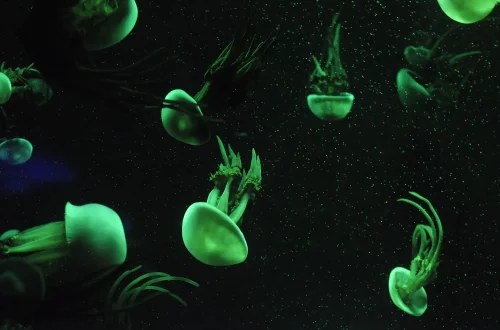
Understanding the Lifespan of a Blue Tongue Skink in Captivity
Understanding the Lifespan of a Blue Tongue Skink in Captivity
Blue tongue skinks, with their striking appearance and gentle demeanor, have become increasingly popular among reptile enthusiasts. These lizards, characterized by their distinctive blue tongues, are native to Australia and New Guinea, thriving in a range of environments from forests to grasslands. As fascinating creatures, they possess unique adaptations that allow them to survive in the wild, but many enthusiasts are keen to understand how these traits translate to a life in captivity.
In captivity, the lifespan of a blue tongue skink can vary significantly based on several factors, including diet, habitat, and overall care. While these lizards can live for a considerable number of years, providing the right environment and meeting their specific needs is essential for maximizing their longevity. Understanding the various aspects of their care and how these elements contribute to their overall health is crucial for any potential owner. By learning about the factors that influence their lifespan, enthusiasts can ensure that their blue tongue skinks lead happy and healthy lives, allowing them to enjoy the companionship of these remarkable reptiles for many years.
Factors Influencing Lifespan
The lifespan of blue tongue skinks in captivity can be influenced by a range of factors, each playing a significant role in the overall health and well-being of these reptiles. First and foremost, proper diet is critical. Blue tongue skinks are omnivorous, meaning they require a balanced diet that includes both animal and plant matter. A diet rich in vitamins and minerals, such as leafy greens, fruits, and protein sources like insects or cooked meats, is essential for their growth and longevity.
In addition to diet, habitat plays a pivotal role in the health of blue tongue skinks. Providing an appropriate enclosure that mimics their natural environment can significantly affect their lifespan. This includes maintaining the right temperature gradients, humidity levels, and hiding spots to help them feel secure. If a skink is kept in an environment that is too hot, too cold, or too dry, it can lead to stress and various health issues, which can shorten their lifespan.
Moreover, regular veterinary care is another crucial factor. Routine check-ups can help detect potential health problems early on, allowing for timely interventions. Diseases such as metabolic bone disease or respiratory infections can severely impact a skink’s life if left untreated. Therefore, ensuring access to a veterinarian who specializes in reptiles is essential for the long-term health of blue tongue skinks.
Lastly, genetics also play a role in determining lifespan. Like all animals, some blue tongue skinks may have genetic predispositions to certain health issues or conditions that can affect how long they live. By understanding these factors, owners can take proactive steps to enhance the quality of life for their pets, thus potentially extending their lifespan in captivity.
Optimal Care Practices
To ensure that blue tongue skinks live their fullest lives in captivity, optimal care practices must be implemented. One of the most important aspects is creating a suitable habitat. A well-designed enclosure should include appropriate substrate, hiding spots, and climbing opportunities, which allow skinks to exhibit natural behaviors. A larger enclosure is preferable, as it provides ample space for movement and exploration.
Temperature regulation is also critical. Blue tongue skinks require a basking area with temperatures around 95°F, while the cooler side of the enclosure should be maintained at around 75°F. This gradient allows the skink to thermoregulate effectively, which is essential for its metabolism and overall health. Additionally, UVB lighting is important to support calcium metabolism, as it helps prevent metabolic bone disease—a common issue in reptiles that do not receive adequate UV exposure.
Hydration is another vital element of care. Blue tongue skinks should have access to clean, fresh water at all times. While they do obtain some hydration from their food, providing a shallow water dish for soaking can help them stay hydrated and promote healthy skin and shedding processes.
Another key aspect of optimal care is social interaction. While blue tongue skinks are generally solitary animals, they do benefit from gentle handling and interaction with their owners. Regular, positive interactions can help reduce stress and make them more accustomed to human presence. However, it is essential to be mindful of their body language and avoid overstimulation, as this can lead to stress and anxiety.
In summary, providing optimal care for blue tongue skinks involves creating a suitable habitat, maintaining proper temperatures, ensuring hydration, and fostering gentle social interaction. By focusing on these aspects, owners can significantly improve the quality of life for their skinks, promoting a longer and healthier lifespan.
Signs of Aging and Health Concerns
As blue tongue skinks age, owners should be aware of certain signs that may indicate the onset of health issues. One common indicator of aging is a change in activity levels. Older skinks may become less active than their younger counterparts, spending more time resting or hiding. While some decrease in activity is normal as they age, a significant drop can signal potential health concerns that may need veterinary attention.
Another sign to watch for is changes in eating habits. A blue tongue skink that suddenly loses interest in food or begins to eat significantly less may be experiencing health issues, whether due to age or other underlying problems. Monitoring their weight is also important, as unintentional weight loss can indicate an illness that should be addressed promptly.
Skin condition and shedding patterns can also provide insights into the health of an aging skink. A healthy skink will shed its skin regularly and without complications. If an older skink begins to have difficulty shedding or develops dry, flaky skin, this could be a sign of dehydration, improper humidity levels, or underlying health issues.
Additionally, dental health is often overlooked but is crucial for the well-being of blue tongue skinks. Over time, they may develop dental issues that impact their ability to eat properly. Regular veterinary check-ups can help identify and address these concerns before they become severe.
In conclusion, recognizing the signs of aging and potential health issues in blue tongue skinks is vital for their long-term care. By staying vigilant and proactive, owners can address any concerns early, ensuring their pets maintain a good quality of life as they age.
**Disclaimer:** This article is for informational purposes only and should not be considered medical advice. Always consult a qualified veterinarian for health-related issues concerning your pets.




